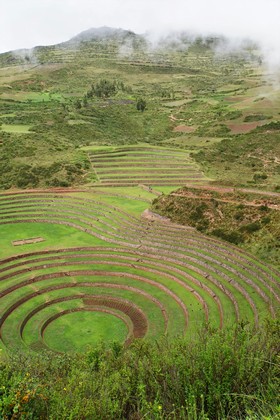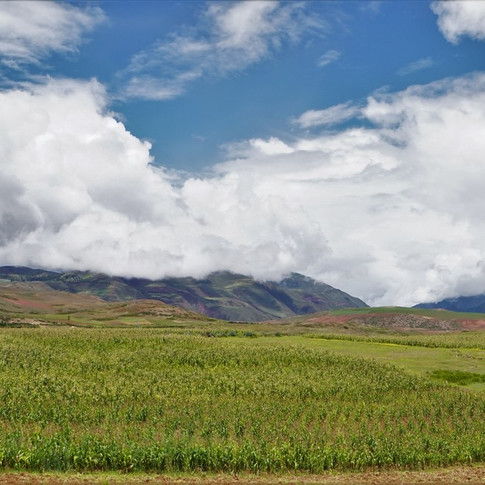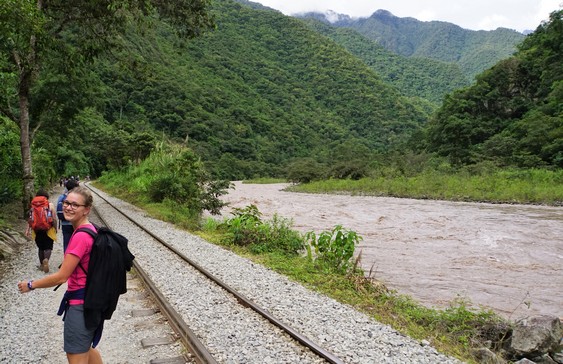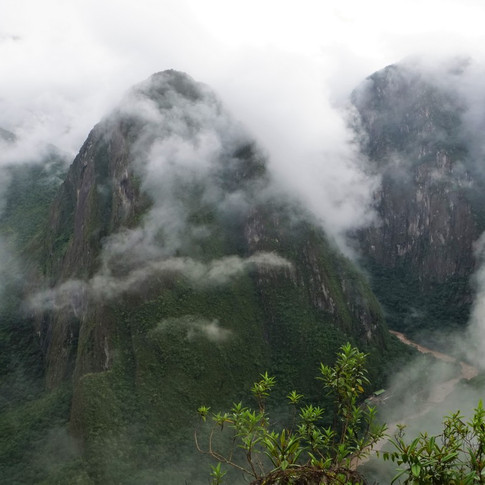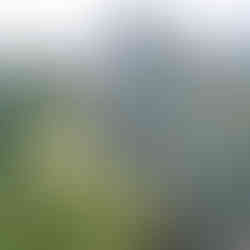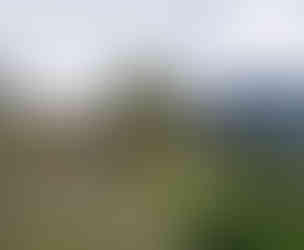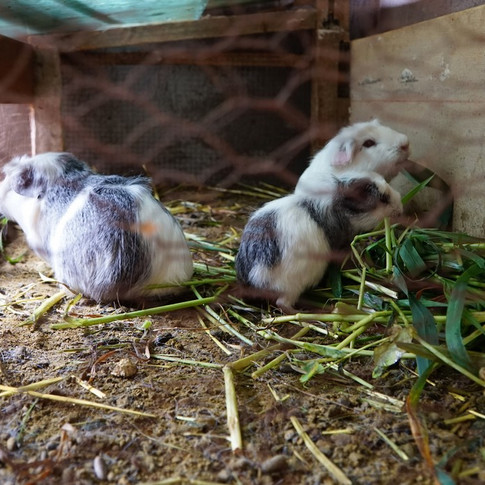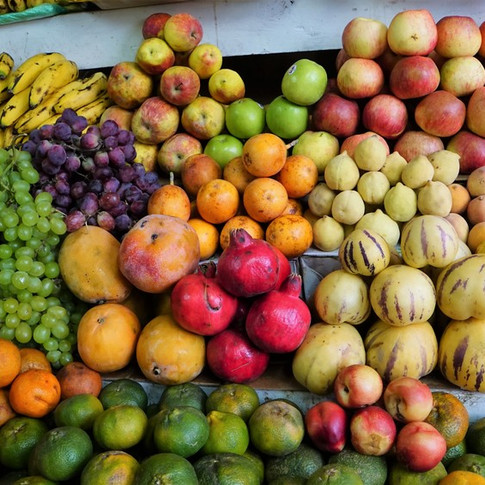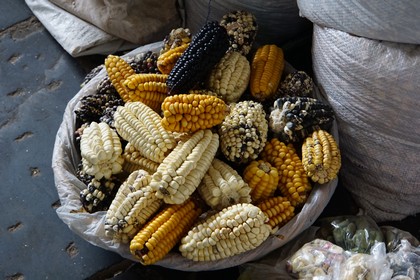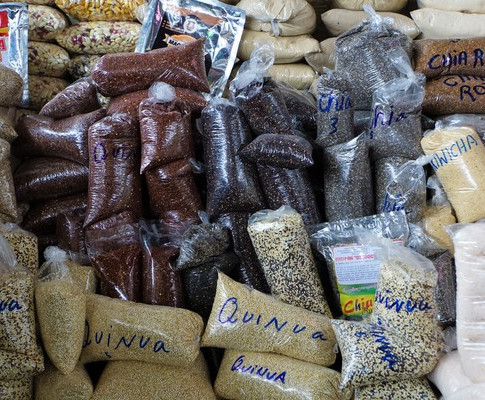WANDERING AROUND THE SACRED VALLEY AND THE ANDES
- Renata
- Feb 13, 2016
- 13 min read
In Cuzco everyone talks about the trip to Machu Picchu, some have just come back from the tour, others are just about to go there, but it is surely on everyone’s agenda. Most people use Cuzco as their base and don’t spend more than a few days in the area, meaning that apart from seeing Machu Picchu and a few museums in Cuzco they don’t tend to visit many other places in the Sacred Valley, the area around the city. What a mistake! Travelers to Machu Picchu miss out so much of the cultural experience and natural beauty of the Valley this way!
Our plan was to spend a few days in Cuzco to visit the most important places in the Sacred Valley with a Cuzco base before going to Machu Picchu. However, the more we heard about the Valley, the more time we wanted to spend there. On our visit to the Planetarium we met a lovely Australian couple who just came back from Ollantaytambo, one of the main towns (I’d rather call it a village) in the Valley, and was so overwhelmed by the place that we decided to put our base there for a few days instead of Cuzco. It was a better choice for us because Ollanta (as the locals call it) is closer to some places to visit nearby and it is also more convenient to get to Machu Picchu from here. At the same time, it is a small, picturesque village with traditionally dressed locals, surrounded by mountains and Inca ruins, that also offers a great grid of trekking paths to the Andes. Moreover, it’s still not crowded by tourists, as most people come here for a maximum of one night only, a stopover on the way to or from Machu Picchu (as the train coming from Cuzco stops here). Just what we needed!
Day 1 – Ollantaytambo and trekking in the Andes
For all the reasons above we took a collectivo bus from Cuzco to Ollanta and got there in less than 2 hours with a surprisingly comfortable bus. The road took us through some fantastic landscapes! This area has been the heart of Inca agriculture for centuries in the middle of the Andes. Different types of potatoes and corn grow here, while part of the land is also used for grazing sheep, llamas, cows and pigs. In each village a statue of agricultural workers dominates the main square, sometimes not just adults but children helping them too, which clearly shows the value of manual labour here.
Many people still wear traditional costumes every day. Due to the chilly and rainy weather, for ladies it’s multiple layers of thick and colourful wool (it looks so at least) clothes and a hat made of sheep or llama skin (the latter one is much more expensive but is waterproof which is much needed here). Men are less likely to wear costumes in towns but in more remote villages it is not uncommon. Weaving is the traditional art here, and beautifully made handicraft products are available everywhere, from ladies selling them on the streets to craft markets and souvenir shops at all corners.
Not much after arriving to Ollanta we picked up a map of the trekking paths from an active NGO in the area, who also organizes trips to local villages and sells handicraft from local women cooperatives. We chose a 6-hour return trek to some Inca ruins as a warm up before Machu Picchu. Due to the rainy season some of the creeks that we had to cross on the way grew to small rivers, so our waterproof hiking shoes got tested again and proved to be really handy. They could not help unfortunately against the heavy rain that reached us on the way back, which didn’t leave any of our clothes dry. It was part of the experience though, and we were lucky to have sunny weather most of the way.
Learning point 1-2: Even in heavy rain be picky with the place you choose for dinner if you want to avoid a 3-day diet with only plain biscuits when you would need some energy to climb mountains! When something tastes sour that most probably means that something is not right – don’t be naive to blame it on the “special” taste of local food.
Day 2 – Day trip to the Inca ruins in Moray, Maras and the Salineras salt mine
We started our second day early as we wanted to do a bigger day trip to the spectacular Inca ruins of Moray, the little sleepy agricultural village of Maras, and the natural salt mine, the Salineras, which produces the well-known Maras salt of the area, which are all within hiking distance from each other. We had to take a collectivo from Ollanta to a crossroad which leads to these villages, and then we shared a taxi with about 5 more people to the village. It’s an art how drivers try to maximize the revenue they can make from a ride, they don’t know any capacity limit of their car, and the rest is up to the passengers to sort out. When you think the car/bus is full, in fact double that amount of people can still fit somehow… Due to the heavy rain in the morning in the end we had to take a taxi to the Moray Inca ruins (which was the result of a roughly 15-minute negotiation on the price with the guy who decided to become a taxi driver for us) and only walked from Maras to the Salineras, and from there to the main road back to Ollanta (altogether about 1.5-2 hours). The path took us through a picturesque scenery of corn fields on the foot of mountain ranges with fortunately some patches of sunshine.
After descending from the mountains at the end of the tour, hikers need to go to the main road and wait for a collectivo that goes towards Ollanta to stop. By the time we got to this point in the trip the rain was pouring again, so standing by the main road and waiting for a bus wasn’t a very fun activity. We made a few buses stop but they were all full, full in the Peruvian way, meaning there was really no more space, the seating capacity was probably about 150% used. These buses still stopped though and when asking if they had 2 more seats for us they said yes, so it seemed it was only us being so picky that we didn’t want to sit on the laps of some nice local gentlemen and rather waited a bit more in the rain. We were once even offered to climb up to the luggage rack on the top of the van, which would have sounded fun in better weather, but we decided to wait further for a luckier catch. Finally, the help arrived in the form of a Jehova’s Witnesses minibus, which was carrying about 10 locals to the Ollanta market in traditional clothes from head to toe who kindly made some space for us. Szilveszter says he has never travelled in a bus in worse condition before: parts of the door were missing (some of the holes were so big you could throw an apple out of the bus), it was a challenge to open it in the first place as there was no handle, and the inside of the car was seriously rotting too. At that point, completely soaked (again!) we considered it our Porsche and we were really happy to share the ride with our group, who were loudly and passionately chatting all the way in Quechua, the local language.
Here is our bus:

Day 3 – By bus and on foot to Aguas Calientes through the Andes
On Thursday it was time to start our way by bus in the direction of Machu Picchu, as we had our entrance ticket for Friday. Tickets to the ruins are easy to get for your day of choice (at least in the rainy season); however, if you want to hike up to the mountain behind the ruins, called Wayna Picchu, from where there’s a stunning view over Machu Picchu, you need to book well in advance. We did it about 5 days early and were two of the lucky 400 people of the day who could climb up the almost vertical 1500+ stairs to the peak! But before that we had to make it to Machu Picchu first. As mentioned earlier you can do this either by train from Cuzco, or from Ollanta, or you can take a bus. As the 3rd alternative, some people climb the 4-day Inca trail and get to the ruins on foot from the starting point which is close to Ollanta; this trail; however, is closed in February so it wasn’t an option for us. From the remaining two options, the train ride is considered to be the world’s most expensive one per km (it costs about $130 from Cuzco $80 from Ollanta each way), hence buses are getting more and more popular (which only costs about $20 return). However, while the train is a comfortable 2-4 hour journey (so you can visit the ruins and return to Cuzco/Ollanta the same day if you want), completing the trip by bus requires at least 2 days. Buses leave from Cuzco (and stop in Ollanta) and take 7 hours (5 hours from Ollanta) to take tourists to the hydroelectric power station, a dam on the river. The road conditions to this point get worse and worse as we get further from towns, and at some point it is just about the width of one car with cliffs on one side down to the deep and high cliffs (which are often falling and fully cover the road with rocks) on the other side. On this road there is two-way traffic, which makes the ride truly unforgettable! Due to the rainy season creeks along the road leave their basin and flow on and across the road too, so the minivans often had to cross 15-20cm deep water. The road keeps turning around the mountains up and down over several hours which can highly affect those with sensitive stomach… Apart from the road conditions though, the scenery on the way is absolutely beautiful.
Once the bus arrives to the hydroelectric station, people need to walk for 2-2.5 hours along a train track and a river that lead up to Aguas Calientes, the village closest to Machu Picchu. Not surprisingly the village is fully specialized at tourism, it’s almost only built up of restaurants and hostels. In the large local handicraft market tourists wander around the typical Peruvian handicraft products and can also find some reasonably-priced silver jewellery with Inca design.
Day 4 – Machu Picchu
After spending the night here at accommodations which are mostly low value for money compared to elsewhere, the next morning you can visit Machu Picchu. From Aguas Calientes a few brave backpackers take the trekking trail up to the ruins, which is a sweaty 1-1.5 hour climb up the mountain, while most people take the pricey bus from the village (12 USD for a 25-minute ride). Queuing for the bus starts at 4:45 A.M. in order to avoid massive crowds at the ruins.
We decided to take the bus on the way up from the village to save some energy for the Wayna Picchu peak climb over Machu Picchu, but we took the stairs on the way down. This means that on the day of the visit we climbed up to Wayna Picchu on almost vertical stairs using hands and legs and a rope fixed to the rocks on the way (this took us a very intensive 45 minutes), then came back from the peak to the ruins with shaking legs (which took another 45minutes), then walked down from the ruins to Aguas Calientes again (in another 45 minutes) on almost vertical stairs again, then in 1.5-2 hours we walked back to the hydroelectric station to wait for our 5-hour drive back to Ollanta. So indeed, we did save a lot by choosing the bus over the train, but it was a very tiring day. I don’t need to say that it was totally worth it though for the breath-taking views (in all senses) over the ruins and the surrounding mountains, and it was also a nice accomplishment to do this with manpower! The sore muscles reminded us this fantastic accomplishment even two days later, which was another benefit.
Machu Picchu itself (meaning “Ancient Mountain”) gained its significance due to being the Inca site which was not discovered by the Spanish at the time of the conquests, hence it was found in a very good state. It was only found in 1911 by an American explorer, Hiram Bingham, who was lead to the site by a local boy. Local communities have always known about the ruins but kept it as a secret over centuries. Since its re-discovery Machu Picchu has been contributing to the economic growth of Peru, and has become one of the most visited places in South America. In terms of its function there are only legends based on its grandiose size. One says, for instance, that it might have been a summer residence for the rich Inca, but nothing is certain.
When we got to the ruins for their opening at 6 am, it was covered in thick clouds and fog so we couldn’t see further than a few meters. We hoped we wouldn’t be so unlucky to not be able to see it once we were finally there! We had to start our climb up to Wayna Picchu at 7am. The ruins are most impressive and mystical from above, that’s why we opted in for a bit of extra climb. Luckily by the time we made it to the top, completely out of breath, the clouds started rising so the lines of the ruins were about to become visible. Within about 30 minutes the sky cleared up and we could look at this wonder from high above. When descending to the ruins we realised why it is advised to go as early as possible to avoid the crowds – the ruins were totally packed with tourists even now in the low rainy season, so I wonder what it could look like in the busy period!
The overall experience was fantastic and it was worth all the effort! Back in Ollanta we celebrated the day in a great restaurant (my first proper meal in 3 days after the long-lasting dinner experience with the strange taste that strongly contributed to my slimming diet).
Learning point 3: “Aki korán kel, aranyat lel. / The early bird gets the worm.” We don’t like getting up before the sun but to get the real sense of a sacred place it’s most rewarding to visit it as early as possible before the crowd.
Day 5 – Cooking course
After our visit to Machu Picchu we wanted to make a relaxing day, so after hiking up to the Inca granary ruins above Ollanta (which was not particularly part of the chilling out yet) we signed up for a cooking course with a local lady at her house. It’s now almost become a tradition for us to do this whenever we go to a country with interesting cuisine. It’s a great opportunity to learn a bit more about the local ingredients, the preparation process and just as importantly to see how locals live. This time the course took place in a typical, very basic family house with cute guinea pigs in the yard. As explained later these are unfortunately not kept as pets in Peru… We learnt how to make quinoa soup, one of the favourite dishes in the country, and causa which is a potato dish, basically mashed potato with special lemony seasoning layered with shredded chicken and avocado. Cooking courses are still relatively new and undeveloped here in Ollanta, so we missed a few things from the course that were really enjoyable at our course in Guatemala last year, or in the highly professionally organized cooking course in Chang Mai, Thailand, but it still gave us some interesting insights.
In terms of the Peruvian food it’s worth mentioning here some of the very typical dishes and ingredients which might be new to the European taste:
First of all, quinoa is used here for all type of dishes, for instance soups, pizzas as a cover, salads or desserts such as cakes or ice cream too. On the market we saw many varieties and colours. Locals complain that over the past 10 years it has become an expensive ingredient as more of the production is exported to feed the health-craze in developed countries.
As expected, potato is very popular too. We’ve seen little white ones which looked like mushrooms, little dark brown ones and many varieties of the purplish-brown version that we know back home too. Some other varieties such as sweet potato and yucca are also common and make excellent side dishes.
Corn is widely used here, for instance in soups together with pieces of the cone, boiled like at home, as a beer called chicha, and as a soft drink called chicha morada made from purple corn.
Guinea pig (cuy) is the local delicacy for special events and celebrations, therefore it’s quite expensive. Comparing the price to the amount of meat you get it’s actually a purchase of terrible value, but many tourists still feel the pressure to taste it. It’s often grilled on a stick in one or fried in pieces, and Szilveszter says the taste is not too special, a bit like any smaller bird, but it’s even more work to eat than lobster. (As I used to have a guinea pig as a pet when I was a child I decided to miss the chance to sample this furry favourite.) It’s so common, that every market has a big section of grass for cuy, and you see people walking with big batches of this grass on their back, which suggests that cuy are common at houses. As we learnt, guinea pigs are normally kept free in the kitchen where the floor is lower than the rest of the house, so the animals can’t escape.
Llama meat is prepared in several ways, which has a similar texture to beef with a characteristic taste.
A fruit that we found in Ecuador and now in Peru too is the tree tomato. It grows on trees and it’s mostly used in juices in Ecuador (it tastes too bitter as a raw fruit).
Inka Cola is also a local favourite; however, one bottle was enough for us, it reminded Szilveszter of red-flavoured (strawberry?) Fanta which used to be popular 15-20 years ago, but then went out of fashion. Funnily enough it has a yellow colour, rather than the red Fanta…
Day 6 – Carnival in the market town of Pisac
Our final visit in the Sacred Valley took us to Pisac, a village famous for its market, which happened to be the location of the biggest Carnival celebration of the region too! We didn’t want to miss the opportunity to see this as we heard that it is a very colourful celebration in costumes and is a lot of fun. Interestingly, similarly to Hungarians, Peruvians also have the tradition of pouring water on each other, but they do it at Carnival and not at Easter like we (used to) do. These days the fun in Peru involves not only water in water pistols and balloons but soap foam too. It’s most popular with kids who look out for careless people walking on the street and attack them. The temperature does not seem to worry anyone, nor does the pouring rain, children fight with each other in wet clothes and covered in foam. We were cautious enough to wear our rain jackets on the day as we have had enough wet clothes by this point!

The carnival in Pisac is traditionally a dancing competition among villages from the area. Communities are represented by groups wearing their typical costumes who proudly show off their dancing skills on the streets and on the main square. Foreigners escaped from the water and foam war to restaurants and cafes with terraces on the 1st floor overlooking the main square which gave a good overview of the celebration. We had a nice time watching the dancers in their vivid costumes and the water fight below us and trying some of the local sweets as a treat.
After such a culturally-rich and adventurous week in the Sacred Valley, we were now ready to move on a bit further South to the scenic Lake Titicaca and then crossing the border to Bolivia.











